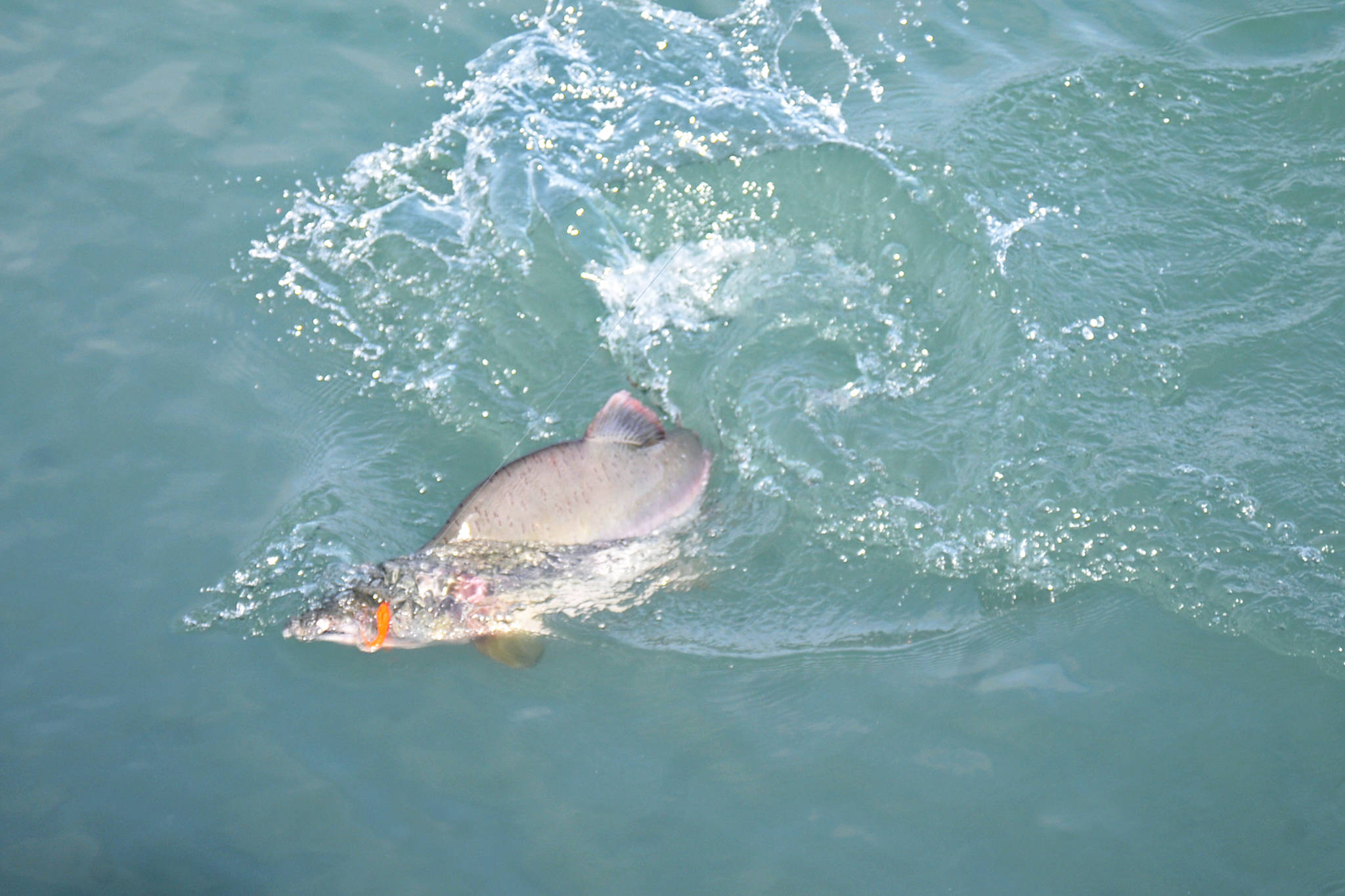Though pink salmon harvests are ahead of what they were in 2016, the last comparable run-size year, they are still significantly below the forecast level.
As of Aug. 28, Alaska’s commercial pink salmon harvest was 38.2 million fish, about 4 percent ahead of the harvest in 2016. Pink salmon have a two-year life cycle, with large runs in even years and smaller runs on odd-numbered years, so the harvests are compared on every other year as compared to year-over-year like other species. Two years ago, the pink salmon runs returned so small that the U.S. Secretary of Commerce declared a fishery disaster on the Gulf of Alaska pink salmon fisheries.
The total harvest so far is slightly more than half of the forecasted 69.7 million fish for this season. Cook Inlet’s fishermen have harvested about 965,000 pinks, significantly more than the 465,000 in 2016. The vast majority of those — about 838,815 pinks — have been harvested in Lower Cook Inlet, largely the southern district bays around the lower edge of the Kenai Peninsula south of Kachemak Bay. The Port Graham Section alone has harvested 345,648 and the Tutka Bay Special Harvest Area has harvested 269,165, both of which have pink salmon hatcheries nearby.
Pink salmon harvest varies in other areas of the state. Kodiak’s harvest of pinks so far is behind the forecast but significantly better than in the 2016 disaster year. The Alaska Peninsula and Aleutian Islands and Bristol Bay are both behind both their forecasts and the 2016 harvest. Southeast’s pink salmon is about 67 percent below its normal even-year harvest, with about 7.3 million pinks harvested so far compared to the 18.4 million harvested in 2016.
Salmon fishermen have had a hard year across the Gulf of Alaska this year, with the statewide average buoyed by a recordbreaking sockeye salmon harvest in Bristol Bay but significantly below average in areas like Cook Inlet and Kodiak, particularly for sockeye.
The fishermen affected by the 2016 disaster may finally see some federal funding soon. In January 2017, then-U.S. Secretary of Commerce Penny Pritzker declared a fishery disaster, making the area eligible for federal funding to recuperate the losses. Congress appropriated $56.3 million and is seeking comments on the proposed spending plan for distributing the funding until Sept. 7.
The proposed plan sets four criteria for funding — to improve fishery information to better assess and forecast future fishery performance, to support fishery participants directly involved and harmed by the disaster, to affect the most people possible and to address losses to primary business and infrastructure that directly support pink salmon fisheries and that experienced the greatest losses.
Researchers, fishermen, municipalities and processors are eligible to receive funds. According to the draft plan, $4.18 million is allocated for three research projects: A prince William Sound juvenile salmon survey, the ongoing multi-year hatchery salmon-wild salmon interaction study in Prince William Sound and Southeast Alaska, and the Southeast Alaska Coastal Monitoring Survey that surveys juvenile pink salmon abundance.
For the fishermen, the funds aren’t meant to fully restore the losses they experienced, but to push the total 2016 exvessel value up to 82.5 percent of the five-year average exvessel value. For example, in Lower Cook Inlet, the 2016 exvessel value was $110,512, while the five-year average was $454,796, so the funds needed to reach the target percentage would be $264,695, according to the draft plan. About $32 million of the funds are allocated to help fishermen.
Municipalities affected by a loss of commercial fishery landing taxes are slated to get $2.4 million of the funds, while processors are slated to get $17.7 million. Processor awards would be based on their 2016 gross revenues and five-year-average gross revenues, according to the draft plan.
The state developed the plan in conjunction with the Alaska office of the National Oceanic and Atmospheric Administration and the final plan will be administered by the Pacific States Marine Commission, according to a press release issued by the Alaska Department of Fish and Game on Thursday. Fish and Game is accepting comments on the draft plan on its website.
“The State of Alaska’s intent, per the appropriation language, is to distribute the federal funds to the affected parties as soon as practical,” the release states.
Reach Elizabeth Earl at eearl@peninsulaclarion.com.

